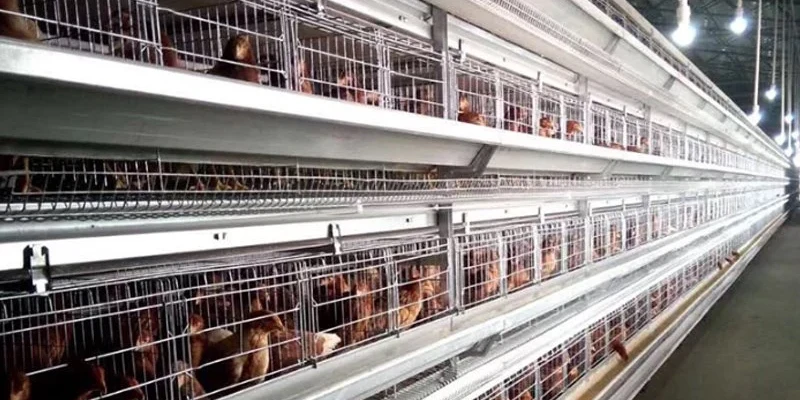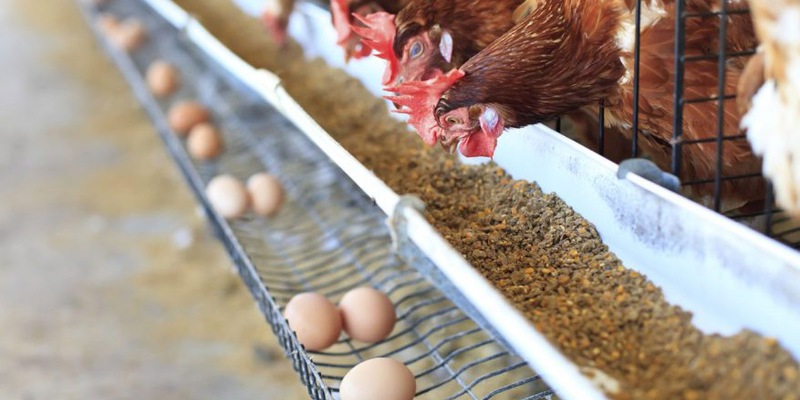
Design of 20,000 Large-Scale Laying Chicken Breeding Project
In recent years, the demand for poultry products, particularly eggs, has increased dramatically around the globe. As a result, many investors are turning to large-scale poultry farming as a lucrative business opportunity. The 20,000 large-scale laying chicken breeding project presents an exciting venture for entrepreneurs who aim to capitalize on this growing market. This article outlines the critical components and considerations in designing such a project to ensure efficiency, profitability, and animal welfare.
Objectives of the Project
The primary objective of the 20,000 large-scale laying chicken breeding project is to establish a sustainable and efficient egg production system. Goals include maximizing egg yield, maintaining high standards of biosecurity, ensuring the health and welfare of the chickens, and minimizing operational costs. By focusing on these objectives, farmers can create a productive environment that benefits both the enterprise and the community.
Site Selection
Choosing the right location is one of the most crucial steps in launching a successful 20,000 large-scale laying chicken breeding project. Key factors to consider during site selection include:
- Accessibility: The facility should be easily reachable for transporting feed, chicks, and equipment while also allowing smooth access for logistics related to egg distribution.
- Water Supply: A reliable source of clean water is essential. Chickens require substantial amounts of water for drinking, cleaning, and cooling.
- Land Area: Sufficient space is needed not just for housing chickens but also for managing waste effectively and accommodating future expansion plans.
- Zoning Regulations: It’s essential to comply with local zoning laws regarding agricultural operations to avoid any legal issues.
- Environmental Factors: Assessing local climate conditions can help mitigate challenges associated with extreme weather, which may affect housing design and management practices.
Poultry House Design
A well-designed poultry house is vital for the success of the 20,000 large-scale laying chicken breeding project. Important aspects of poultry house design include:
Space Requirements
Providing adequate space is crucial for the well-being of the hens. Generally, layers require about 1.5 to 2 square feet per bird. Therefore, for 20,000 laying hens, the total housing area should range from approximately 30,000 to 40,000 square feet.
Ventilation Systems
Proper ventilation is essential for maintaining air quality and temperature control within the poultry house. A combination of natural ventilation (using windows and vents) and mechanical systems can help regulate humidity and prevent heat stress among the birds.
Lighting
Lighting plays a pivotal role in stimulating egg production. The design should include a lighting system that replicates natural daylight cycles. Utilizing automatic timers can help manage light exposure efficiently, contributing to optimal laying behavior.
Nesting and Roosting Areas
Designate sufficient nesting boxes within the house to accommodate the flock. Each nest box should ideally cater to 3-5 hens to ensure comfort and accessibility. Proper roosting areas are equally important as they allow chickens to express natural behaviors, thus promoting better overall health.
Feeding and Watering Systems
Efficient feeding and watering systems are vital components of the 20,000 large-scale laying chicken breeding project. Automated systems can reduce labor costs and ensure that birds receive a balanced diet:
Feeders
Invest in trough-style or chain feeders that minimize feed wastage while meeting the dietary needs of the hens effectively.
Drinkers
Nipple drinkers or bell drinkers are excellent choices, providing fresh and clean water at all times. These systems help maintain hygiene and reduce water wastage—essential for maintaining a healthy flock.
Biosecurity Measures
To safeguard the health of your chickens, stringent biosecurity measures must be implemented throughout the 20,000 large-scale laying chicken breeding project. Key measures include:
Fencing and Controlled Access
Establish secure fencing around the farm while limiting access to authorized personnel only. Hygiene stations and footbaths at entry points can significantly reduce the risk of disease transmission.
Regular Health Monitoring
Conduct routine health checks and vaccinations based on veterinarian recommendations. Early detection of illnesses can prevent outbreaks and save significant costs related to treatment and lost productivity.
Environmental Management
Sustainability should be at the forefront of the 20,000 large-scale laying chicken breeding project. Implement environmentally friendly practices, such as:
Waste Management
Poultry farms generate substantial waste, particularly manure. Consider composting manure to produce organic fertilizers, which can either be used on-site or sold, turning waste into revenue.
Energy Efficiency
Investing in energy-efficient systems, including LED lighting and solar panels, can drastically reduce operating costs. Employing renewable energy sources aligns with global sustainability goals and enhances the farm’s public image.

Labor Management
A skilled workforce is vital to the effective operation of the 20,000 large-scale laying chicken breeding project. Establish a comprehensive training program that covers best practices in animal husbandry, biosecurity protocols, and equipment handling. Investing in employee training not only enhances productivity but also fosters a culture of care and responsibility towards the welfare of the chickens.
Workforce Structure
Create a workforce structure that includes various roles such as farm managers, animal caretakers, and maintenance personnel. Each member should have clearly defined responsibilities to ensure the smooth operation of daily activities while promoting accountability and teamwork.
Financial Planning
A comprehensive financial plan is essential for the success of the 20,000 large-scale laying chicken breeding project. Key components of this plan include:
Initial Investment
Calculate the initial capital required for land acquisition, construction of poultry houses, purchase of equipment, and procurement of chicks. It’s vital to seek funding options such as bank loans, grants, or partnerships to cover these costs.
Operational Costs
Estimate monthly operational expenses, including feed, veterinary care, labor, utilities, and maintenance. Understanding these costs will help in setting realistic revenue targets and maintaining profitability.
Revenue Projections
Based on market demand and pricing trends for eggs, create detailed revenue projections. This information can guide decisions on scaling operations or diversifying product offerings, such as organic or free-range eggs.
Marketing Strategies
To ensure the success of the 20,000 large-scale laying chicken breeding project, it is crucial to develop effective marketing strategies. Key approaches might include:
Branding
Create a strong brand identity that communicates quality and sustainable practices. Transparency about production methods can attract consumers who prioritize ethical sourcing.
Distribution Channels
Identify optimal distribution channels to reach target markets effectively. Establishing relationships with local grocery stores, restaurants, and farmers’ markets can help in building a loyal customer base.
Digital Presence
In today’s digital age, having an online presence is vital. Utilize social media platforms and a dedicated website to engage with potential customers, share information about your farming practices, and promote your products.
Conclusion
The 20,000 large-scale laying chicken breeding project represents a significant opportunity for those looking to enter the poultry industry. By focusing on key design elements such as site selection, housing, feeding systems, biosecurity, environmental management, and financial planning, investors can create a successful and sustainable poultry operation. Employing modern technology, adhering to best practices in animal welfare, and implementing effective marketing strategies will further enhance the project’s potential for profitability and community impact.

